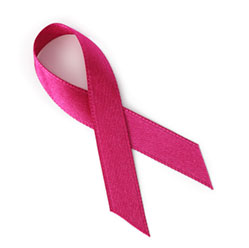- Cancer
- Community & News
- Service Line
Six Risk Factors for Breast Cancer in Men

No one expects men to get breast cancer, but it still happens. The lifetime risk for a man to get breast cancer is about 1 in 726. For women, that number is 1 in 8.
Apurva Mehta MD, of the TriHealth Cancer & Blood Institute, explains a few factors that put a man at risk for developing breast cancer.
#1: Being Diagnosed with Klinefelter Syndrome
Klinefelter syndrome is a rare condition, characterized by the presence of an extra chromosome in a male (it presents as XXY instead of XY). Men with this condition have higher levels of estrogen, which has been linked to breast cancer.
#2: Being Diagnosed with Gynecomastia
Gynecomastia is a condition that causes the growth of abnormally large breasts in males. It is due to the excess growth of breast tissue, not excess fat tissue. Changes in the levels of androgen and estrogen hormones, or how the body responds to these hormones can cause enlarged breasts in men.
This condition may occur in one or both breasts and often begins as a small lump beneath the nipple. Gynecomastia during puberty is not uncommon and usually goes away on its own. While having gynecomastia does not put you at a significantly higher risk for developing breast cancer, it's still important to be aware of this condition.
You should contact your doctor if you present the following gynecomastia symptoms:
- You have recent swelling, pain, or enlargement in one or both breasts
- There is dark or bloody discharge from the nipples
- There is a skin sore or ulcer over the breast
- A breast lump feels hard or firm
#3: High Alcohol Consumption
Research shows that drinking more than two glasses of alcohol a day may increase your risk for breast cancer. For this reason, Dr. Mehta advises limiting alcohol intake.
#4: Being Overweight
Obesity is another factor linked to breast cancer. Studies show that obese people produce more estrogen, which can fuel the development of breast cancer.
A BMI that falls between 18.5 and 24.9 is considered to be healthy. If your BMI is above 25, losing weight can reduce your risk for developing breast cancer as well as other health conditions.
#5: Testicular Problems
Men who have testicular issues, like undescended testes or who experienced a testicular injury while playing sports, are at a higher risk for developing breast cancer.
For example, “people who have what we call, recurrent testicular infection, they don’t make that much testosterone … and they end up with more estrogen,” Dr. Mehta points out.
#6: Inherited Gene Mutations
Men can carry genetic mutations that increase their chance of breast cancer in their lifetime. A mutation in the BRCA2 gene increases a man’s lifetimes risk to 6 in 100 while a BRCA1 mutation increases the risk to 1 in 100. If you have a family history with multiple members with breast, ovarian, pancreatic or prostate cancer you, may want to consider genetic testing to determine if you carry a genetic mutation that increases your risk for breast cancer or puts your family members at higher risk for breast cancer.
While breast cancer in men is less common than in women, it does happen. If you feel a lump in your chest, underarms or notice a change in the appearance of your chest or nipples you should have an exam with your physician. Be sure to contact them right away.
If you do not have a physician one of our medical breast specialists can evaluate you. Call 513-865-5110 to schedule an appointment.
Related Articles
- Cancer
- Genetic Testing
- Service Line
- Women's Health